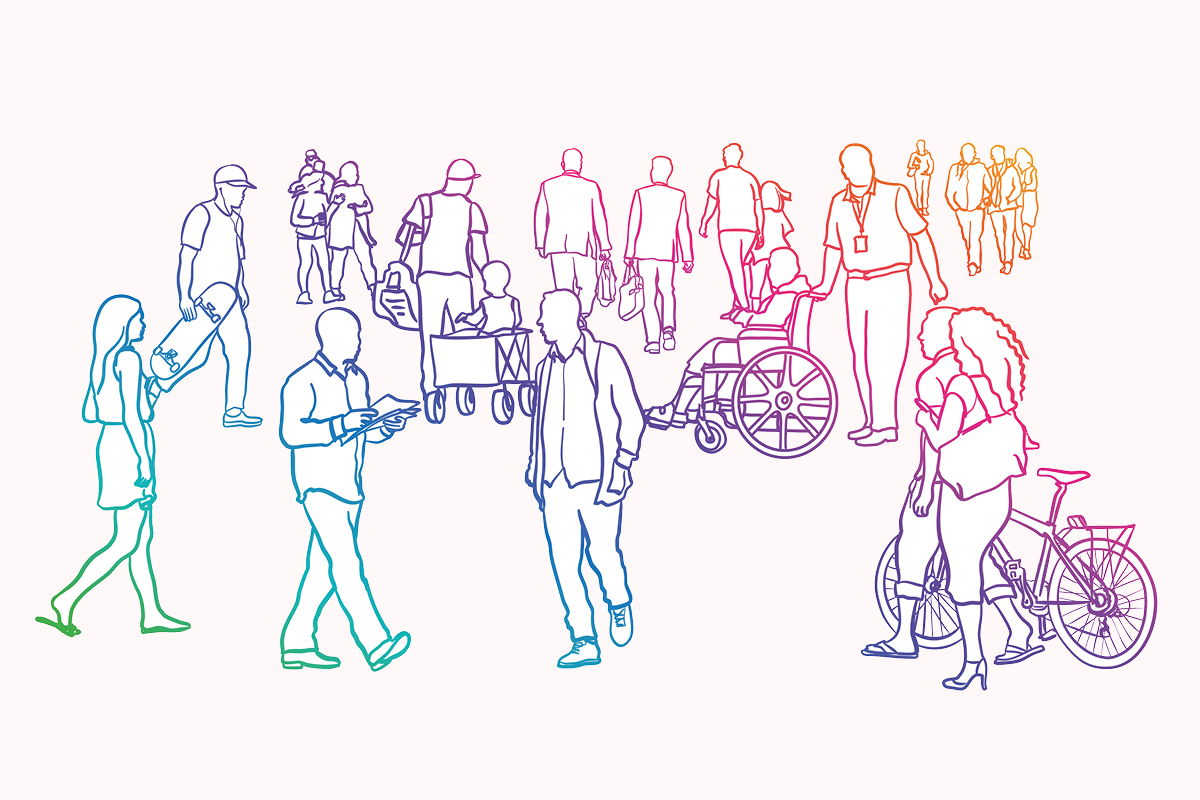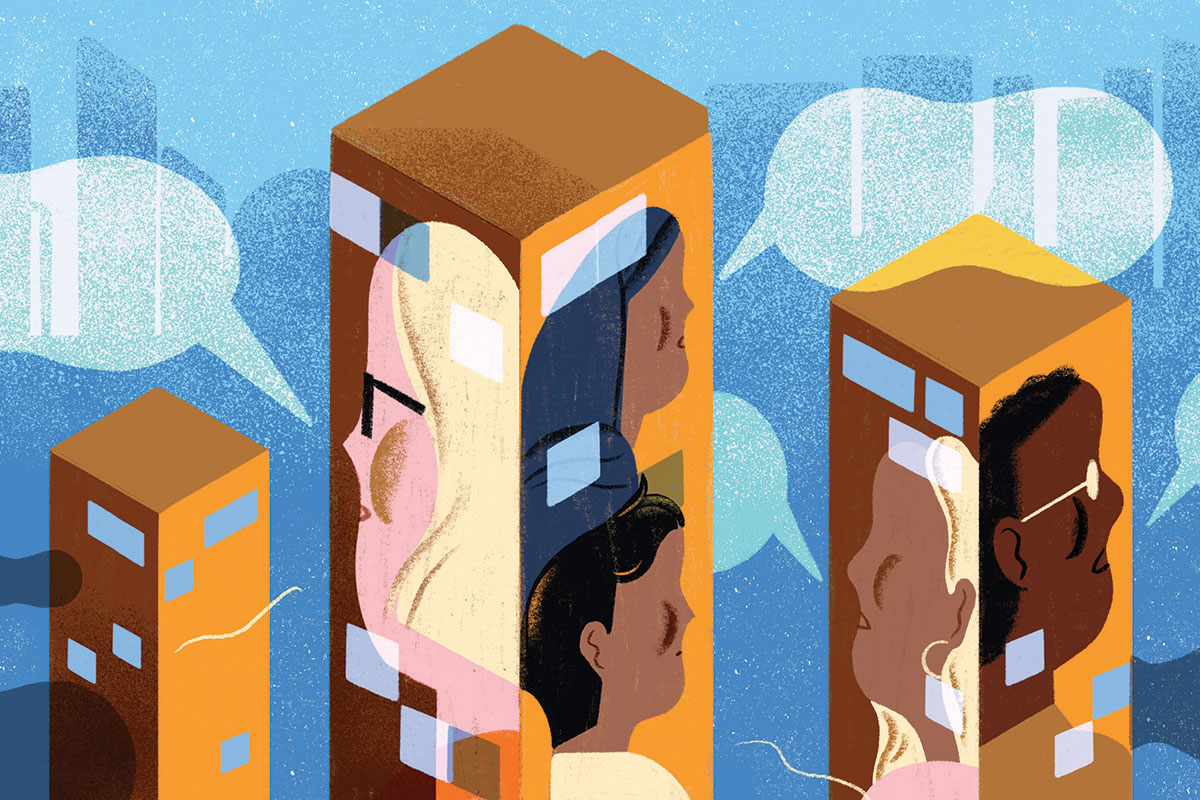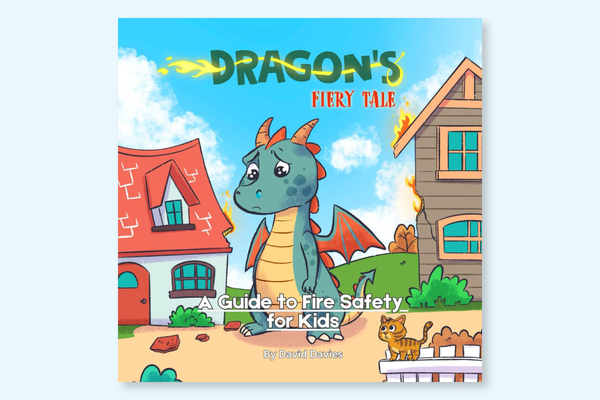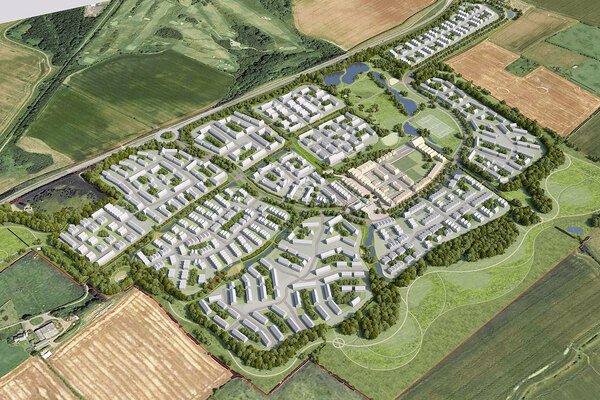The young social housing tenants fighting for their voices to be heard
Young people and teenagers can often be overlooked when it comes to resident engagement. But one group of young people has been researching how to change that. Jethro Robathan reports. Illustration by Clive Johnston
“Yes, young people are future tenants, but they are also your current and present residents.” In one sentence, 22-year-old Cindy Boa captures the heart of the problem underpinning her research: teenagers and young adult voices are overlooked by housing providers and housing services.
Ms Boa, a social housing tenant who works in tech sales, is one of the peer researchers on the Young Residents in Partnership programme, which aims to find out how housing associations can begin to include and engage with their young residents.
The project is organised by Partnership for Young London, a youth charity, with support from three housing associations: Metropolitan Thames Valley Housing (MTVH), Clarion and Hyde. It paid six young people the London Living Wage to conduct the peer research, as well as gave them training in empirical research skills and interview technique.
Inside Housing sat down with some of the young people involved to find out what they discovered, and why it is so vital that associations engage with the teenagers and young adults living in their properties.
Young people are an “invisible group”, states 20-year-old Kara Davies, a care support worker and MTVH tenant, who is also a peer researcher on the project. Teenagers and young adults are not a recognised entity in housing policy or legislation, she adds. Young people are rarely main tenants or leaseholders, nor are they taught how to navigate the myriad housing tenures in the UK. “We need young residents to be seen as separate stakeholders and written in as their own clause, so they are recognised,” she says.
The Young Residents in Partnership report is yet to be published, but Inside Housing has been provided with a copy of the key findings. The message is clear: two-thirds of young residents want to be involved in areas such as youth leadership and decision-making in housing, and half (51%) want to see the formation of a young residents’ board within each housing association.
In the report, Andy Hulme, chief executive of Hyde, writes that although “young people are always on our mind… they’re not particularly involved”. He adds that while there is no current mechanism in place to involve young residents, it is a gap he hopes the peer research scheme will begin to bridge.
I speak to Ms Davies at MTVH’s office in London along with fellow peer researcher Theresa Okolo, a 17-year-old Hyde resident who is halfway through her A-levels, with hopes of studying medicine at university. Both are confident, answering questions with precision and minimal hesitation. There is an undeniable buoyant youthful buzz as they bounce off each other’s answers.
Ms Davies says she is fed up with the “vague” mission statements she found on various housing association websites. “I personally want ways to hold our landlords accountable,” she says. “How are things being measured? How are they being executed?”
The invisible group
The research has found that three-quarters of young residents feel like they have little to no say in the decisions made by their association, despite the fact that many take on clear leadership roles in their households.
“A lot of us translate for our parents, so we have to be the people who talk to different providers and services,” Ms Davies explains. “We don’t know much about our housing associations, so how can we help our families?”
Throughout our conversation, the importance of education repeatedly crops up. Many young residents are acting as invisible intermediaries between housing associations, service providers and households, but navigating this informal system without a map can be incredibly difficult. “Education is massive – [it is about] arming people with the tools to change their circumstances,” Ms Davies says. “Even just knowing how to contact housing associations for little things, like minor repairs and fixes.”
Ms Okolo agrees, explaining that she has personal experience of this problem. “When I started doing this project, I was always like, ‘I don’t know what that means,’” she says with a guilty laugh. “If the jargon was just a little simpler and catered to young people, then they are more likely to listen. If they don’t understand, they will just clock out.”
Ms Davies was 16 when she joined an MTVH youth focus group. It was a challenge at first. “My twin and I were the youngest in the group and the only girls.”
Ms Okolo is candid about her reasons for joining the programme. Initially it was about “opening doors for myself. [I thought] this sounds like something I could put on my CV”, she says. An undertone of bashfulness glimmers, although Ms Okolo quickly adds how becoming a peer researcher was a small awakening.
“It sort of became a self-discovery moment… I am very passionate about things that will affect me in the future and affect people now,” she says. “Housing is one of those topics.”
Ms Boa says she felt surprised by “how little effort the housing sector makes to engage young people directly”. She adds: “Working with schools, youth organisations, and grassroots organisations that understand young people in their local areas the best is essential.”
Community engagement plays a huge role in reaching the youth demographic. Both Ms Davies and Ms Okolo are testament to this, having been actively involved in their community through youth centres, charities and school groups before joining the Young Residents in Partnership programme.
But in the decade between 2011 and 2021, local authorities’ budgets for youth provision were slashed from over £1bn a year to about £400m – and youth club closures rocketed. A campaign from the Local Government Association targeted towards revitalising youth services cites the closure of more than 750 youth centres since the coalition government came to power in 2010 and brought in austerity cuts.
A place to call ‘a second home’
Ms Davies and Ms Okolo both testify to the real-life impact this has had on young people. “As soon as you hit the age of 13, there is not really anything for you,” Ms Okolo explains. “You might have a park, but families are there, and if you have a football pitch, you can’t usually play ball games past 6pm because it’s too noisy.”
Ms Okolo adds that several years ago, she was fortunate to have a youth centre to “call a second home”. Others were not so lucky. Ms Davies describes how she and other young people in her area felt “disconnected from our communities” when one of the larger youth clubs shut down. “After that closed down, there was nowhere else for kids over 13 to go,” she says.
It is here that Ms Okolo pinpoints the pitfall of social housing stigma creeping in. “You would find [teenagers] hanging on a corner and all of sudden that corner was seen as dangerous. Or they would go around on their bikes and all of sudden these kids were dangerous.”
“There are arguments at home about your safety, because you know you are safe… but your parents don’t know that,” Ms Okolo explains. “I found that not only was I being disconnected from my community, but it was causing problems at home as well.”
In the conversation around placemaking, this feels like a missing piece: safe spaces for young people to socialise and develop their independence, which is a crucial part of what makes a community.
Engaging with young voices goes beyond changes on their estates and with their housing providers, they want to be heard across the whole housing conversation. In the Young Residents in Partnership report, over 70% of young people flagged “being able to afford a home” as their biggest future concern.
“The impact of poor housing policy that disregards young people creates real suffering,” Ms Boa says. “Young people are consistently overlooked in housing policy and consideration. In fact, currently young people aren’t even mentioned in housing policy.”
Ms Okolo adds: “I want to see young people more represented, with more opportunities for them to grow within their own communities.”
Sign up to our Best of In-Depth newsletter
We have recently relaunched our weekly Long Read newsletter as Best of In-Depth. The idea is to bring you a shorter selection of the very best analysis and comment we are publishing each week.
Already have an account? Click here to manage your newsletters.












